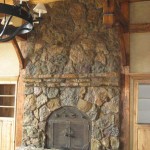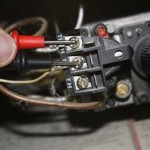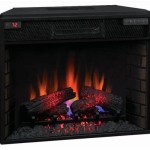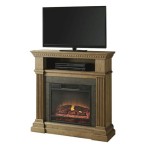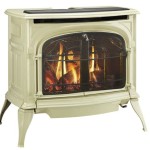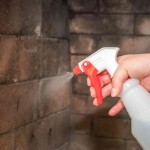Two-Sided Corner Fireplace Insert: A Comprehensive Guide
A two-sided corner fireplace insert presents a unique solution for homeowners seeking to maximize the ambiance and heating efficiency of a fireplace. Unlike traditional front-facing fireplaces, corner inserts are designed to be installed within an existing corner fireplace opening and offer viewing access from two adjacent sides. This design provides several advantages, including enhanced visual appeal, efficient heat distribution, and the potential to create a focal point in multiple rooms or within a single, larger living space.
Selecting the appropriate two-sided corner fireplace insert involves careful consideration of various factors, including the existing fireplace dimensions, the desired fuel type, venting requirements, heating capacity, and aesthetic preferences. A thorough understanding of these aspects ensures the chosen insert meets the specific needs and expectations of the homeowner. This article provides a comprehensive overview of two-sided corner fireplace inserts, encompassing their benefits, selection considerations, installation nuances, and safety aspects.
Benefits of Two-Sided Corner Fireplace Inserts
Two-sided corner fireplace inserts offer a range of benefits that distinguish them from conventional fireplace options. These advantages contribute to their growing popularity among homeowners seeking to enhance their living spaces.
Enhanced Visual Appeal: The most prominent benefit is the enhanced visual appeal. The ability to view the flames from two sides transforms the fireplace into a striking focal point, captivating attention from multiple perspectives. This design is particularly well-suited for open-concept living areas, where the fireplace can serve as a visual divider while simultaneously creating a sense of warmth and connection. The dual-sided view also allows for a more immersive experience, simulating the ambiance of a traditional campfire.
Improved Heat Distribution: Two-sided corner fireplace inserts are designed to distribute heat more effectively than traditional open fireplaces. The enclosed firebox and controlled combustion process minimize heat loss up the chimney, allowing more heat to be radiated into the living space. Furthermore, many inserts are equipped with a fan or blower system that circulates heated air throughout the room, ensuring a more consistent and comfortable temperature. The corner placement also facilitates heat distribution across a wider area, preventing localized hot spots.
Increased Efficiency: Compared to open fireplaces, fireplace inserts are significantly more energy-efficient. They are designed to burn fuel more completely, reducing emissions and maximizing heat output. The sealed firebox also prevents drafts and air leaks, which can contribute to heat loss. The higher efficiency translates to lower heating costs and a reduced environmental impact. The ability to control the airflow and combustion rate allows homeowners to fine-tune the heat output to match their specific needs, further optimizing efficiency.
Zoning Capabilities: Two-sided corner inserts are excellent for zoning heating within a home. By placing the insert between two living spaces, it's possible to radiate heat into each space effectively. This approach offers an affordable alternative to placing dedicated heating units in multiple rooms. It's crucial to consider the size of each room on either side of the insert as it relates to the BTU output of the insert to ensure adequate heating.
Key Considerations When Selecting a Two-Sided Corner Fireplace Insert
Choosing the right two-sided corner fireplace insert requires careful evaluation of several critical factors. These considerations encompass the technical specifications of the insert, the existing fireplace setup, and the homeowner's individual preferences.
Fuel Type: Fireplace inserts are available in various fuel types, including wood, gas (natural gas or propane), and electric. Each fuel type has its own advantages and disadvantages in terms of cost, convenience, and environmental impact. Wood-burning inserts offer a traditional ambiance and a robust heat output, but require a consistent supply of firewood and regular maintenance. Gas inserts provide greater convenience and control, but may be more expensive to operate depending on local gas prices. Electric inserts are the easiest to install and operate, with no venting requirements, but typically offer a lower heat output. The choice of fuel type should be based on individual needs and preferences.
BTU Output: The British Thermal Unit (BTU) output of the insert determines its heating capacity. It's essential to select an insert with a BTU rating appropriate for the size of the space to be heated. An undersized insert will not provide adequate warmth, while an oversized insert may overheat the room. Consult the manufacturer's specifications and consider factors such as the insulation level of the home, the number of windows, and the climate to determine the appropriate BTU rating. A professional HVAC technician can provide guidance on selecting the correct BTU output.
Venting Requirements: The venting requirements vary depending on the fuel type of the insert. Wood-burning inserts require a properly sized and constructed chimney to safely exhaust combustion gases. Gas inserts can be vented using either a traditional chimney or a direct vent system, which draws air from outside the home and exhausts combustion gases through a dedicated vent pipe. Electric inserts do not require venting, as they do not produce combustion gases. Ensure the existing chimney is in good condition and meets the manufacturer's specifications for the chosen insert. Improper venting can lead to dangerous carbon monoxide buildup.
Size and Dimensions: The insert must be sized to fit the existing fireplace opening. Measure the height, width, and depth of the opening accurately and compare these dimensions to the insert's specifications. Leave adequate clearance around the insert for proper ventilation and heat dissipation. Consider the aesthetics of the insert and how it will complement the existing décor. A professional installer can assess the fireplace opening and recommend an insert that fits properly and safely.
Aesthetics and Style: Two-sided corner fireplace inserts are available in a wide range of styles and finishes to match various décor preferences. Consider the overall design of the room and choose an insert that complements the existing aesthetic. Options include traditional, contemporary, and modern designs, with various finishes such as black, stainless steel, and painted surfaces. Some inserts offer customizable features such as decorative logs, flame patterns, and lighting options. The aesthetic appeal of the insert is an important consideration, as it will serve as a focal point in the room.
Installation and Safety Considerations
Proper installation and adherence to safety guidelines are paramount when installing a two-sided corner fireplace insert. Incorrect installation can lead to safety hazards, reduced efficiency, and potential damage to the insert and the surrounding structure.
Professional Installation: It is highly recommended to hire a qualified professional to install the fireplace insert. A professional installer has the expertise and experience to ensure the insert is installed correctly and safely, in accordance with local building codes and manufacturer's specifications. Professional installation typically includes assessing the existing fireplace, preparing the opening, installing the insert, connecting the venting system, and testing the operation. This ensures the insert performs optimally and meets all safety requirements.
Venting System Inspection: Before installing the insert, the existing venting system should be thoroughly inspected to ensure it is in good condition and meets the requirements of the chosen insert. This inspection should be performed by a qualified chimney sweep, and any necessary repairs or modifications should be completed before the insert is installed. A damaged or obstructed chimney can lead to dangerous carbon monoxide buildup and pose a fire hazard.
Clearances and Fire Safety: Maintain proper clearances around the insert to prevent combustible materials from overheating. Follow the manufacturer's instructions regarding minimum clearances to walls, ceilings, and furniture. Install smoke detectors and carbon monoxide detectors in the vicinity of the fireplace to provide early warning of potential hazards. Regularly inspect and maintain the fireplace and venting system to prevent creosote buildup in wood-burning fireplaces and ensure proper gas connections in gas fireplaces. Clean the glass on the insert regularly to maintain visibility and prevent soot buildup.
Building Codes and Permits: Adhere to all local building codes and obtain any necessary permits before installing the fireplace insert. Building codes regulate the installation of fireplaces and venting systems to ensure safety and prevent fire hazards. Contact the local building department to determine the specific requirements for your area. Failure to comply with building codes can result in fines and may require the removal of the improperly installed insert.
Regular Maintenance: Regular maintenance is essential to ensure the continued safe and efficient operation of the fireplace insert. This includes cleaning the firebox, inspecting the venting system, and replacing worn parts. Wood-burning inserts require regular chimney sweeping to remove creosote buildup. Gas inserts require inspection of gas lines and burner components. Electric inserts may require cleaning of the heating element. Follow the manufacturer's recommendations for maintenance schedules and procedures.
By carefully considering these factors and adhering to safety guidelines, homeowners can select and install a two-sided corner fireplace insert that provides years of warmth, ambiance, and enjoyment. These inserts provide an excellent combination of aesthetic appeal, efficient heating, and zoning capabilities for a variety of living spaces.

Corner Two Sided Gas Fireplace Capo Fireside
Corner Two Sided Gas Fireplace Heat Glo

Chicago Corner 40re Designer Gas Fireplace Regency

Flex 68lc Bx2 Left Corner Fireplace Insert Ecosmart Fire

Corner Two Sided Gas Fireplace Capo Fireside

Result For Two Sided Corner Fireplace With Built In Wood Home

Vantage Hearth Direct Vent Gas Corner Fireplace

Flex 104db Bx2 Double Sided Fireplace Insert Ecosmart Fire

Vantage Hearth B Vent Gas Corner Fireplace

Montigo Divine Corner Hl38dfcl Cr Direct Vent Gas Fireplace Woodland
Related Posts

